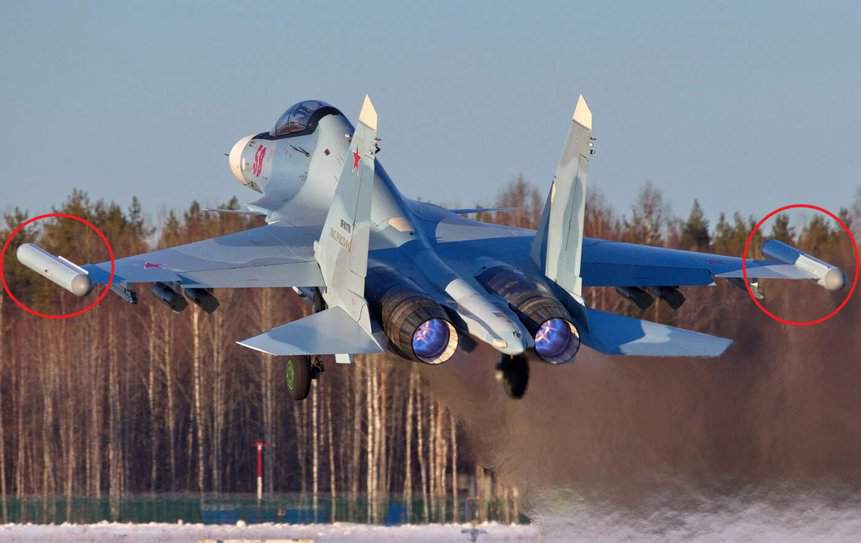The war between Ukraine and Russia has served as a great source of intelligence materials for the West, especially the United Kingdom and the United States. The last of these materials, which will possibly reach “the other side of the border”, is part of one of the most advanced airborne electronic warfare (EW) systems in Russia, and was captured from the wreckage of a Sukhoi Su-30SM fighter.
Ukrainian troops are on a large counter-offensive in Russian-controlled regions and managed to retake, this weekend, part of the city of Izium, in Kharkiv Oblast. It was there that Ukrainian soldiers found the crash site of a Su-30SM Flanker-H fighter.
In the wreckage, the Ukrainians found one of the SAP-518SM 'Regatta' active electronic countermeasures pods. This is one of the systems in the EW Khibiny complex, installed on Su-30, Su-34 and Su-35S planes.
Developed by the Kaluzhsky Radiotechnical Institute for Scientific Research (KNIRTI), the Regatta is made up of two pods, installed on the wingtips of Russian jets. The model found is the 518-PSM pod, mounted on the right wing and responsible for emitting interference waves in the G/J bands in ground attack missions.
https://twitter.com/oryxspioenkop/status/1569359928694902786
The waves emitted by radars and other defense systems on the ground are captured by the 518-LSM1 pod, used as a receiver. They are processed by the other computers in the Khibiny complex, which forward the data to 518-PSM.
The pod then emits signals to create a “ghost image” on enemy radars, forming a false virtual target, away from the real plane, as a means of distraction. Although its design originated in the 1980s, it is believed that the SAP-518SM has received updates over the years.
This is a 518-PSM starboard wingtip pod. It is likely a transmitter (ie jammer) pod, while the port wingtip pod (designated 518-LSM1) is likely a receiver pod. The two detachable pods are part of the SAP 518-SM active ECM system, which is part of the Su-30SM's KS REP ECM suite. https://t.co/PfSrYxHAPG pic.twitter.com/Lk1oKUJZ4T
—Guy Plopsky (@GuyPlopsky) September 12, 2022
The fighter in question is a Su-30SM registration RF-81773. According to Ukrainian Air Force, the impact with the ground was so intense that the plane was buried. It is possible to see one of the R-73 missiles still attached to the wing of the fighter.
The Ukrainians also claim that the jet was shot down south of Izium, on 13/03 (less than 30 days after the start of the conflict) at a height of 6000 meters, during an attempted attack on the town of Balakliya.
Same aircraft in daylight at Novosibirsk. Correction on registration [RF-81773]
(c) Nikolay Enin pic.twitter.com/QQvARqmwWP— Missilito (@Missilito) December 25, 2018
As a result, the Ukrainians captured Sergey Kosyk, deputy commander of the 14th Fighter Regiment of the Russian Aerospace Forces, based at Kursk Air Base.
If indeed this is the case, the capture of the electronic warfare pods exposes a failure on Russia's part to clean up the crash site to prevent important systems from falling into enemy hands. The failure becomes more serious when the time between the accident and the capture of materials is taken into account: almost seven months.
In May, British and American experts managed to reach the wreckage of a Sukhoi Su-35S slaughtered in April. Despite having little left of the plane itself, they would have managed to capture part of the fighter's targeting system, the most modern in use in the conflict.
Most likely, the newly captured SAP-518SM and various other Russian materials are already being extensively studied by Western intelligence, a job called “Foreign Material Exploitation”, or just FME in its acronym in English.
With information Key.Aero, Ukrainian Air Force, Guy Plopsky and deal
